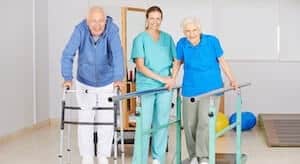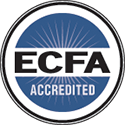Rehabilitation After a Fall: What to Expect

When seniors fall, the injuries they face often lead to a compromise in their independence. Research shows that 87 percent of all fractures in the elderly are due to falling, including 95 percent of all hip fractures. If these seniors neglect to seek proper treatment and rehabilitation immediately, over half of them will likely experience a subsequent fall within a six-month period.
Senior rehabilitation services begin during the hospital stay, which can last up to several days. While you’re still admitted to the hospital, the medical team, the physical therapy team, and the occupational therapy team will assess your condition and determine the right treatment plan. Before you are released, the teams will make sure you’re able to get out of bed on your own, manage your pain, walk with the necessary assistive devices, and manage daily tasks like bathing and dressing.
If you are unable to accomplish these tasks independently, most often seniors are then sent to a rehabilitation center for further care.
Fall Recovery: Proper Senior Rehabilitation is Key
The goal of a senior rehabilitation program is to ensure you comfortably return to your normal lifestyle with a full range of motion and as little pain as possible. Depending on your individual needs and your physician’s care plan, a short-term stay in the rehabilitation center can last anywhere from a few days to about a month. A long-term stay, on the other hand, may be necessary if the injury is more severe. Long-term care can last as long as a few months.
While in rehab for fall recovery, here’s what you can expect:
A fall risk evaluation. The therapy team will conduct an evaluation to determine the extent of your physical impairments, as well as learn your medical history and fall history. This information will allow them to create a plan of care to reduce your risk of a future fall.
Physical and occupational therapy services. Once the team understands the extent of your injury and how to best return you to the level of independence you’re accustomed to, physical and occupational therapy services will begin. Physical therapy for seniors is designed to help improve your strength, endurance, flexibility, and balance, while occupational therapy ensures you are able to successfully perform activities of daily living.
Learn strategies for fall prevention. It’s important to keep you as safe as possible from a future fall, so your therapy team will teach you some fall prevention tips. For example, you’ll learn how to properly navigate with assistive devices, and practice exercises to continue to increase your strength and balance.
Tips to safeguard your home. Finally, the last step in fall recovery may involve an assessment of your home by the occupational therapist to determine what types of modifications may be needed. For example, it may be helpful to add grab bars in the bathroom, to remove throw rugs and low furniture, or to add more lighting.
With proper rehabilitation after a fall, the likelihood that you can return to living as independently as you were prior to your injury increases by up to 80 percent. You might experience a renewed level of confidence and find that daily tasks are now even easier to complete than before.
Specialized Short- and Long-Term Senior Rehabilitation at Advent Christian Village
Find quality in-patient and out-patient senior rehabilitation at Good Samaritan Center and Copeland Medical Center at Advent Christian Village. Our comprehensive services include one-on-one treatment from licensed professionals to ensure you’re enjoying the highest quality of life possible after a fall. Contact us today to learn more or to schedule a tour.



